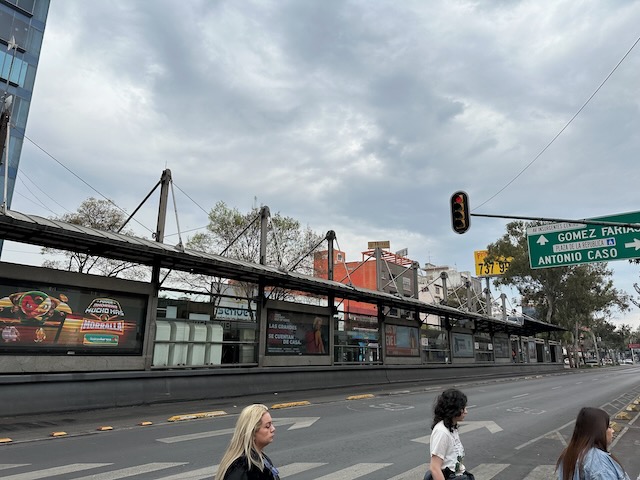This November, Cobb County citizens will be voting to approve an MSPLOST (Mobility Special Purpose Local Option Sales Tax) to implement an enhanced bus system consisting of BRT (Bus Rapid Transit) and ART (Arterial Rapid Transit). Some have been disappointed that the County is not expanding MARTA heavy rail, and few have experienced any form of BRT. I’m sharing my recent experiences with Mexico City’s BRT system to bridge this gap.
First off, BRT can be a tricky term to define, as many use it loosely to enhance marketability. Per the Federal Transit Administration:
Bus Rapid Transit (BRT) is a high-quality bus-based transit system that delivers fast and efficient service that may include dedicated lanes, busways, traffic signal priority, off-board fare collection, elevated platforms and enhanced stations. BRT has advanced throughout the U.S. in the last decade as congestion has increased and community leaders have sought affordable transit alternatives.
Federal Transit Administration, 2015
Notice the use of the word “may” here. You will see many levels of implementation billed as BRT: varying amounts of dedicated lanes or omitting some of the described features. To add more confusion, some people will use words such as BRT-lite. While there may not be a universal standard for the BRT moniker, some accept standards such as the ITDP (Institute for Transportation and Development Policy). Ultimately, BRT systems exist on a spectrum, some with more features than others. ART has some similarities to BRT, but it typically will have much fewer dedicated lanes, if any at all. Station amenities and some transit-signal priority (to speed up trips) are typically applied on ART routes.
Mexico City BRT
Here’s what I think Mexico City (CDMX) gets right with BRT.

Frequency: The buses ran at a high frequency – a critical distinction between BRT and a local bus. Most of the day, it was at 3-minute intervals. This made using transit almost effortless – you knew another bus was about to arrive.
Platform level boarding: The BRT Stations in CDMX had direct, level boarding and wide-open doors accessible to those with varying abilities. The stations were well-signed, and many screens depicted the next arrivals.


Off-board Fare Collection: All the fare payment was completed before boarding, with turnstiles controlled entry/egress in this case. Machines to purchase fare media were available. These features sped up boarding and allowed for very short stops.
Dedicated Right of Way: The traffic surrounding us was often at a standstill as the bus traveled in its dedicated lane. The lanes were separated with a physical (albeit small) barrier, with transit signal priority. This is one of the most critical distinctions between a BRT and a standard bus system. A BRT system should run primarily in a dedicated, separate traffic lane.
Center-Busway Alignment: The buses and stations are in the center of the road. This reduces conflicts with parked vehicles and turning cars. Also note that these systems should run in direct routes, reducing the need to turn across traffic.

Another common feature of BRT is transit-signal priority, allowing the buses to traverse intersections faster. The high frequency of CDMX buses makes transit-signal priority unfeasible! The buses come every 3 minutes, so cross-traffic would be nearly impossible.
All types of people were using transit because it was fast, frequent, and reliable. Buses were faster than personal vehicles, especially when considering parking time. If you use a transit app (I used this one), bus arrivals and locations are readily available, allowing you to plan your trip easily. Due to the high frequency, though, it wasn’t necessary to know the schedule. The buses were clean and comfortable, and the ride was incredibly cheap (around $0.40). Overall, it was well-utilized and a great example for systems in the United States.

The BRT system in CDMX was not perfect – there undeniably were flaws. At peak hours, buses were packed to the brim. Sometimes fare machines ran out of cards. As someone whose Spanish is incredibly poor, I got onto an express bus once and missed my stop. Overall, though, this was a much more extensive, complete system than may be found in the United States, and these problems underscore the heavy use of their system.
What does this mean for Cobb County?
I would not expect Cobb’s MSPLOST implementation to have these frequent 3-minute headways, and I am sure the stations would not be as spacious. But this service is something to be excited about! We will have the opportunity for fast, frequent, and reliable transit in our lifetime, whereas a heavy-rail line into Cobb County may take decades. Imagine taking a trip from Smyrna to Midtown, to the Airport, or to Truist Park on a vehicle that is essentially a light rail. This could be transformative for our county and region, improving connectivity in less time and at a lower cost.

